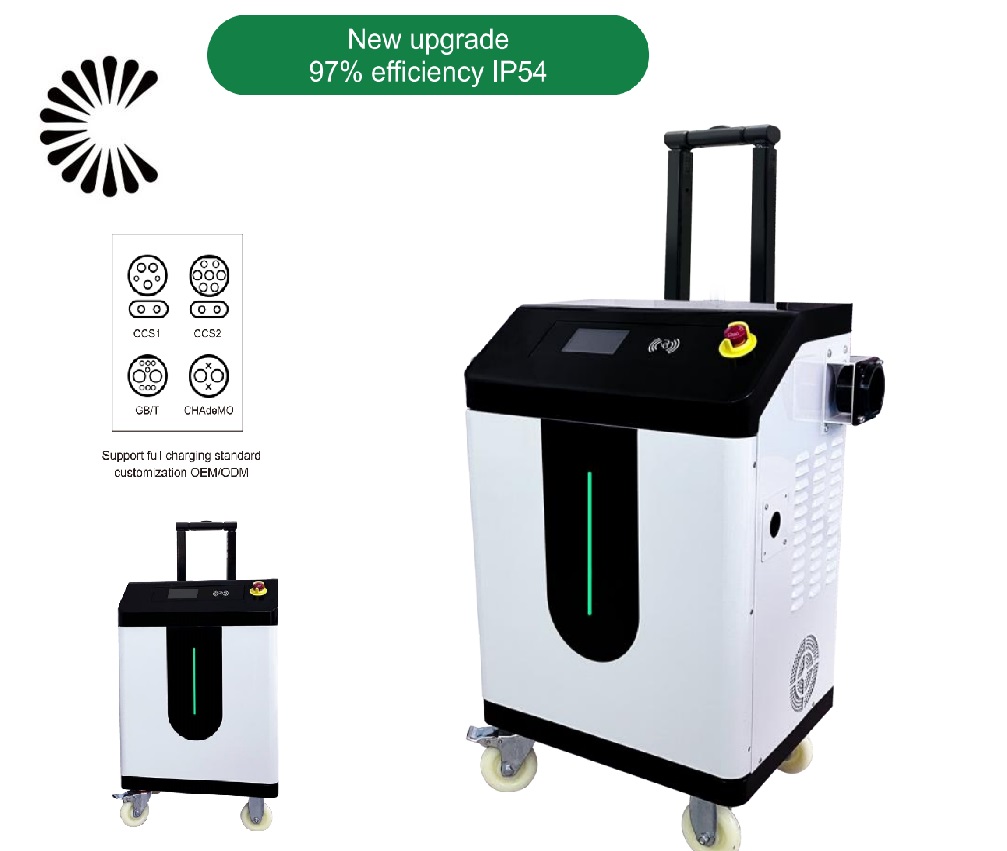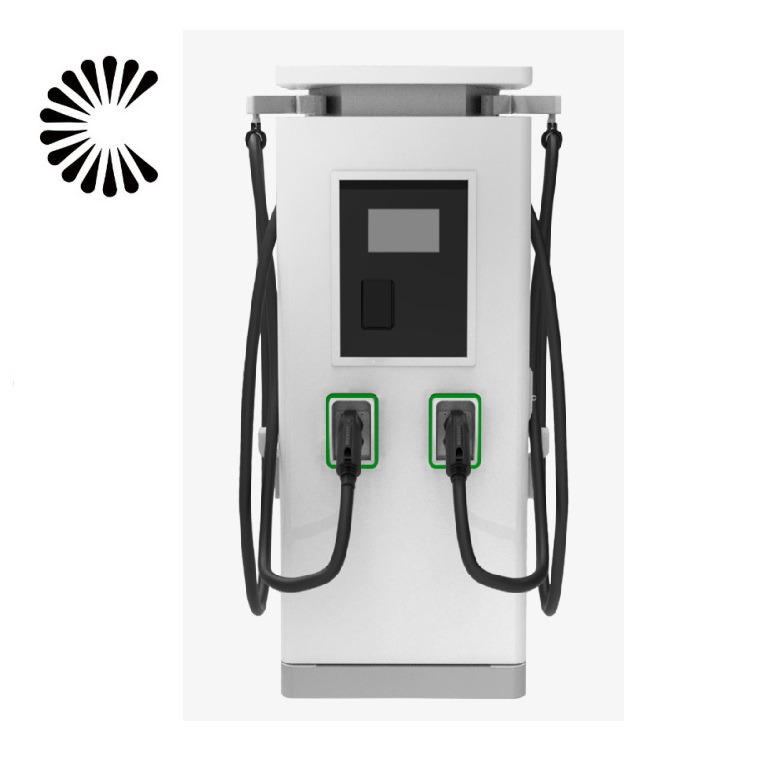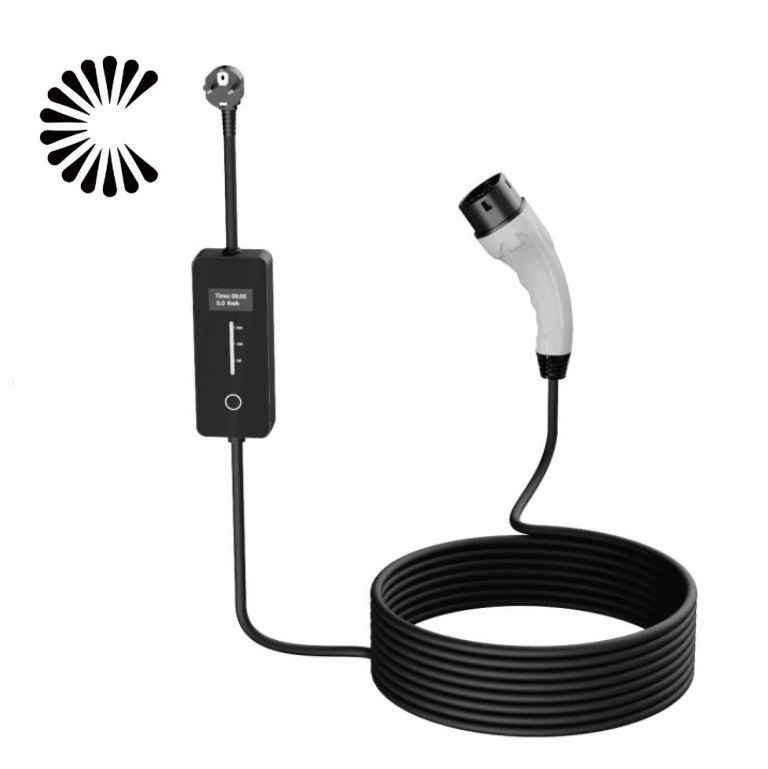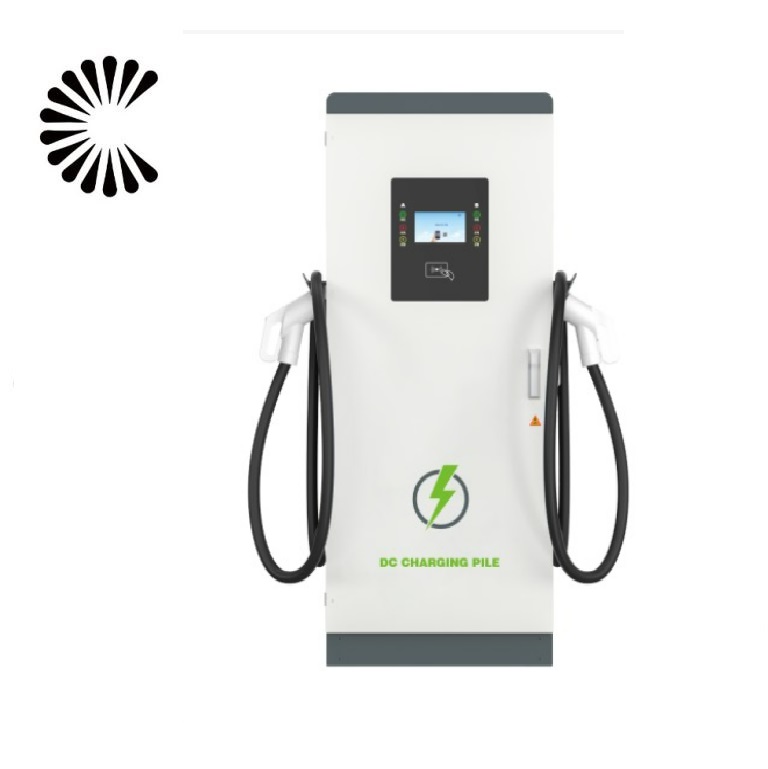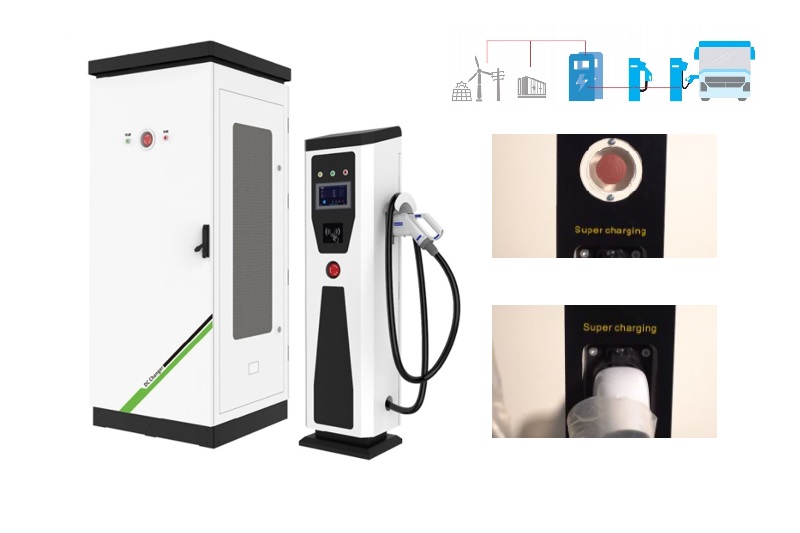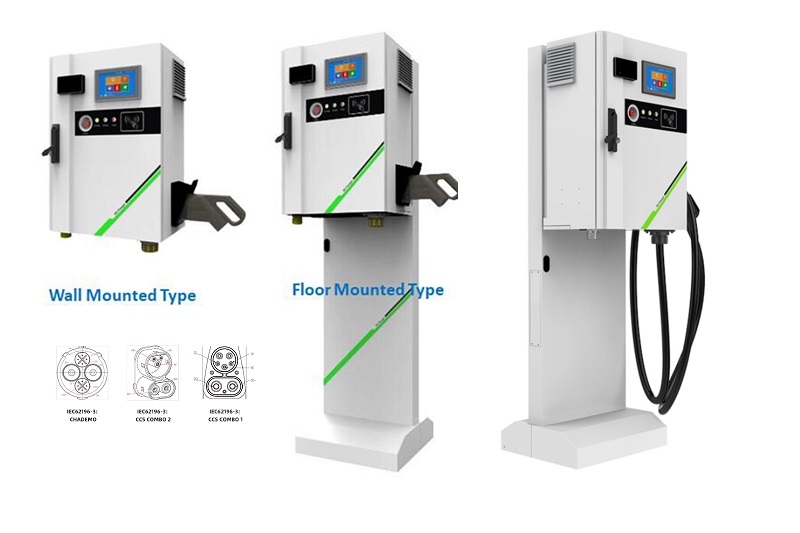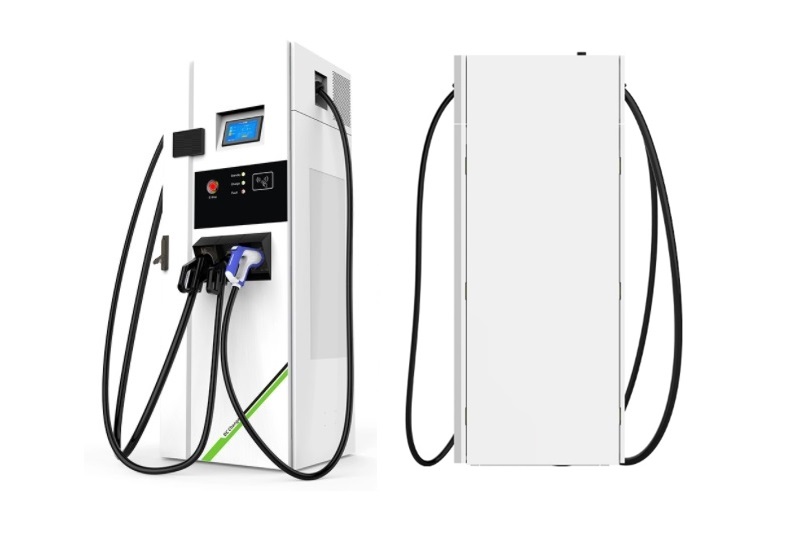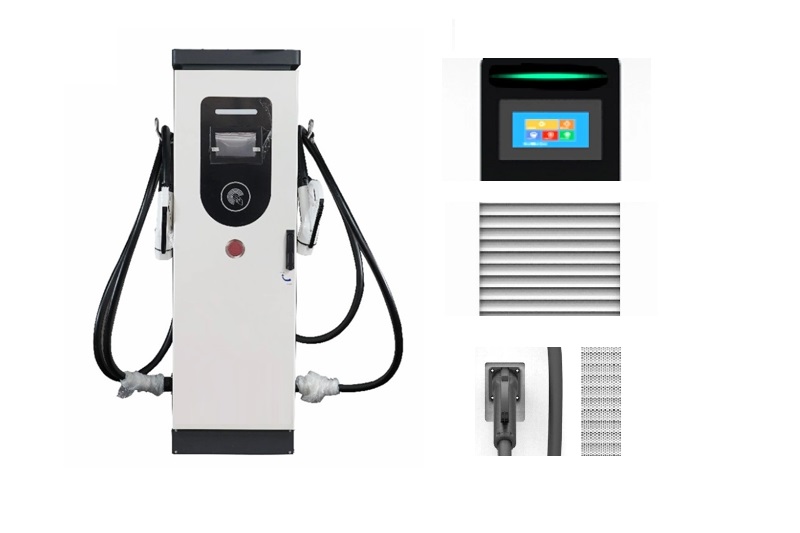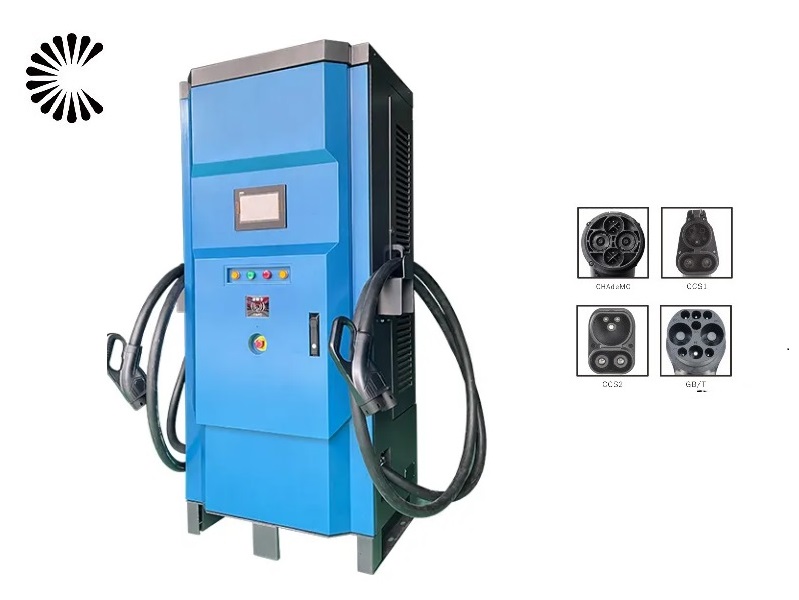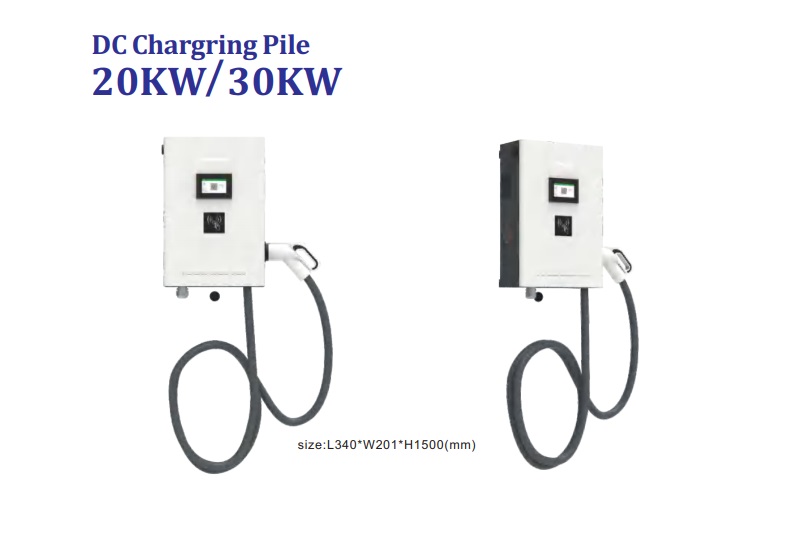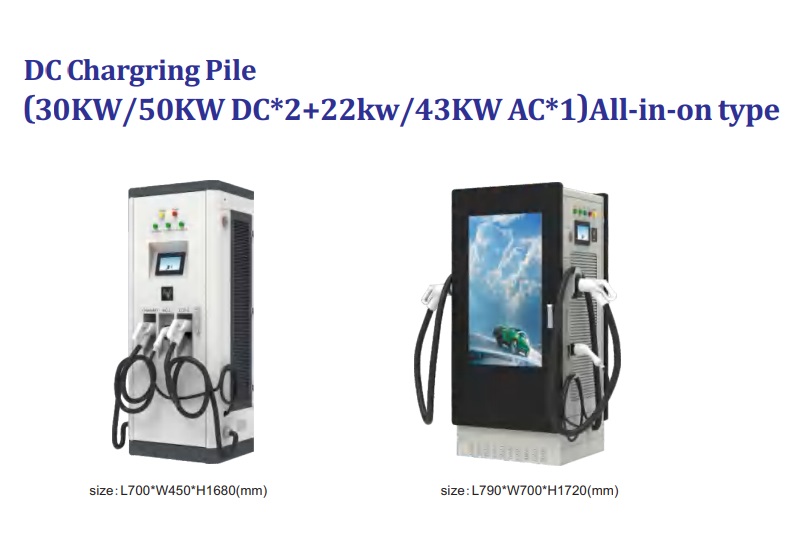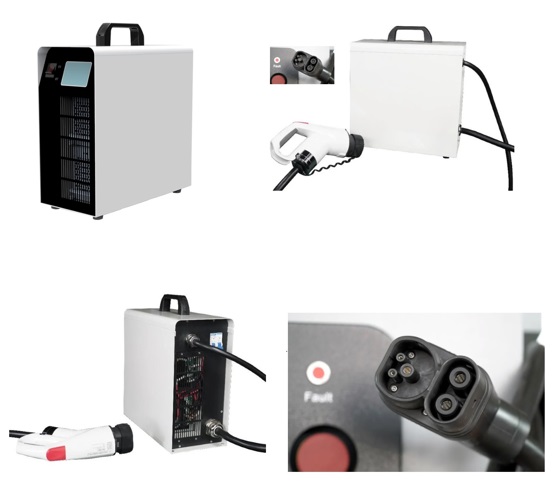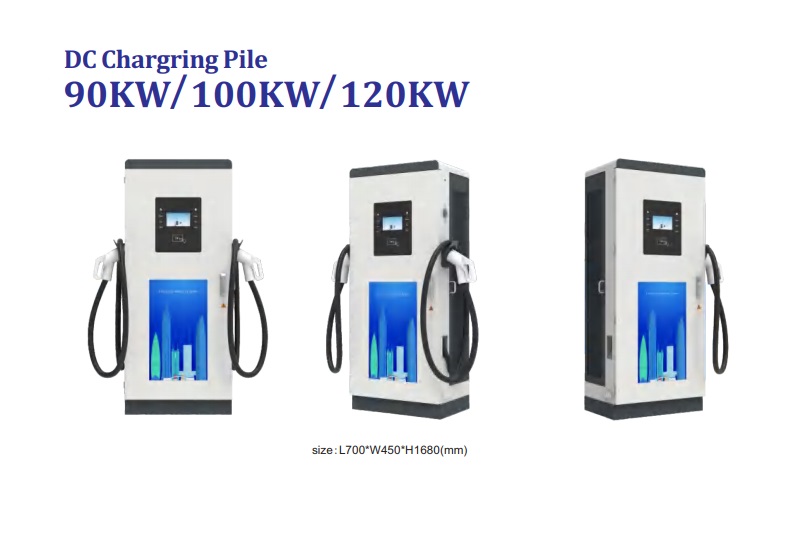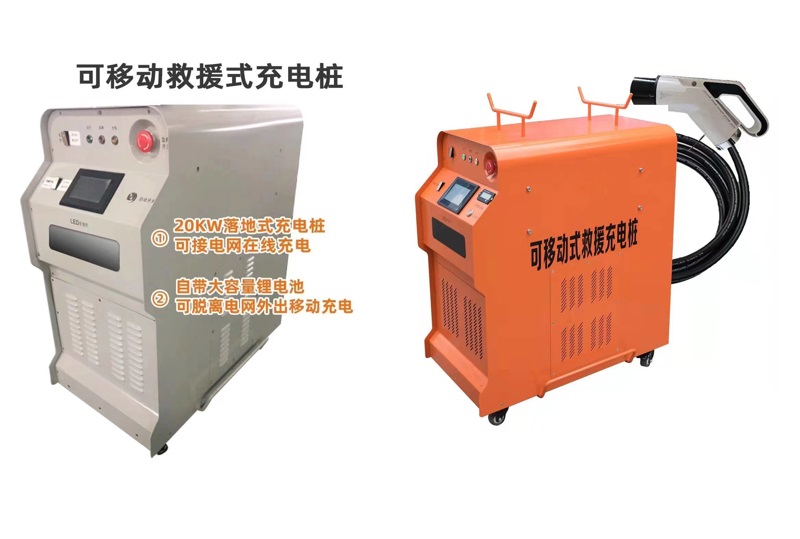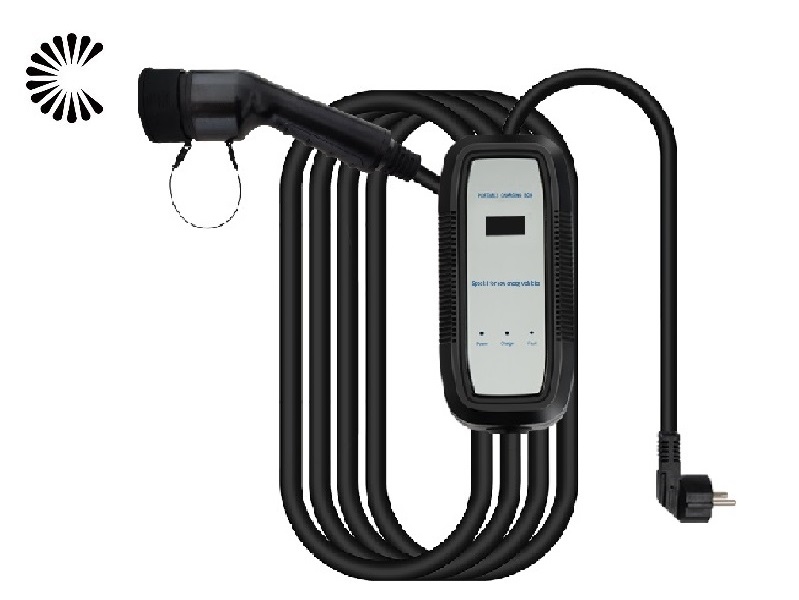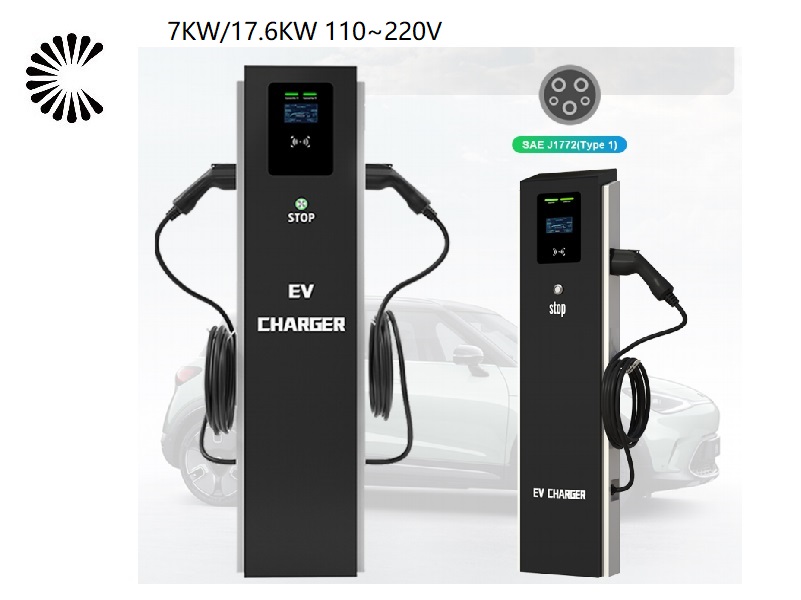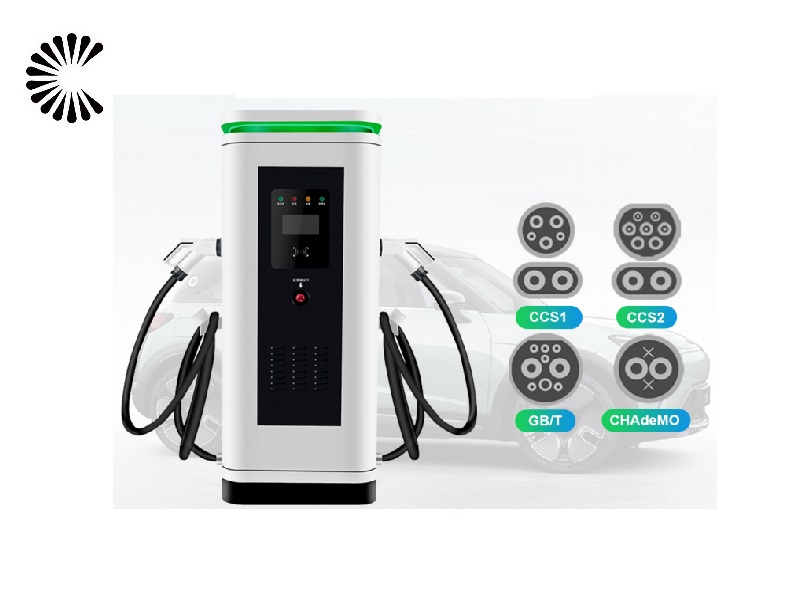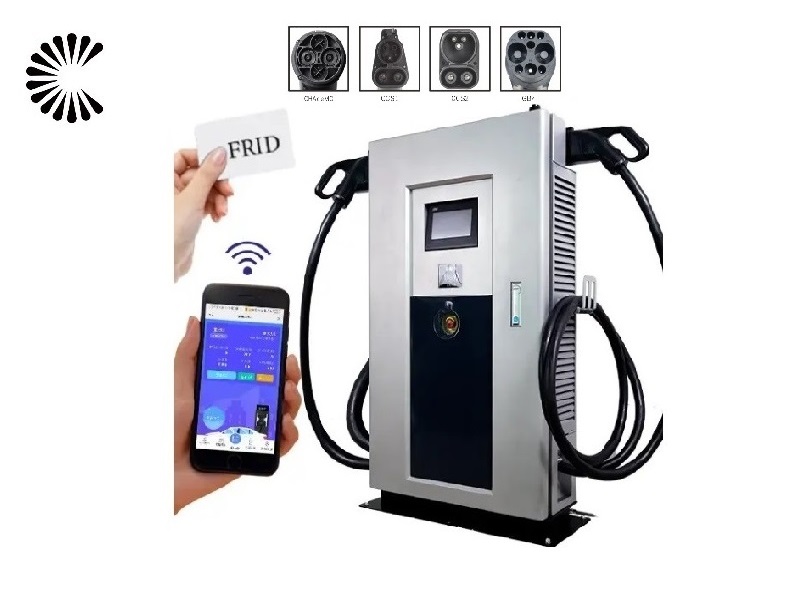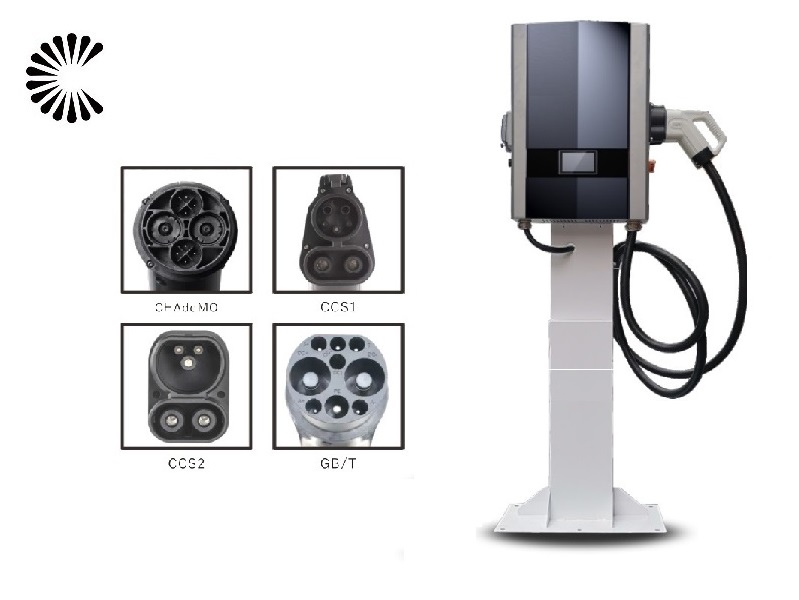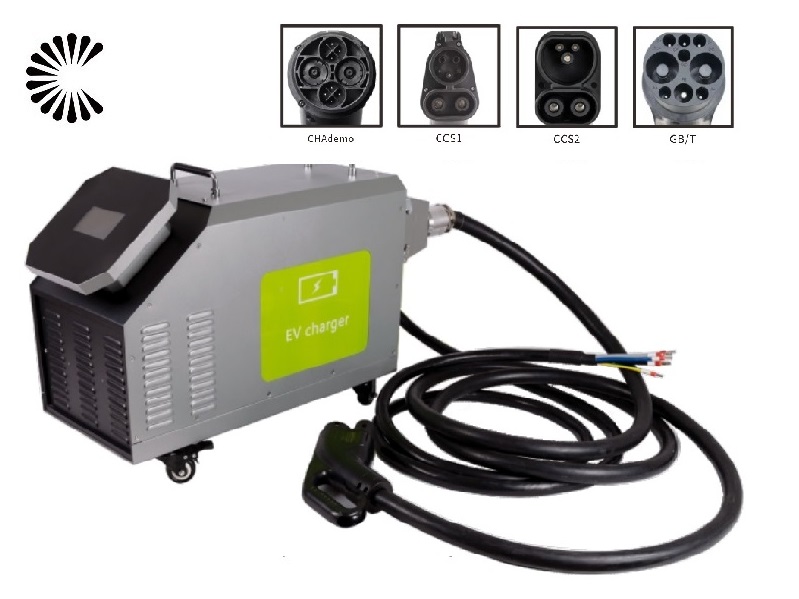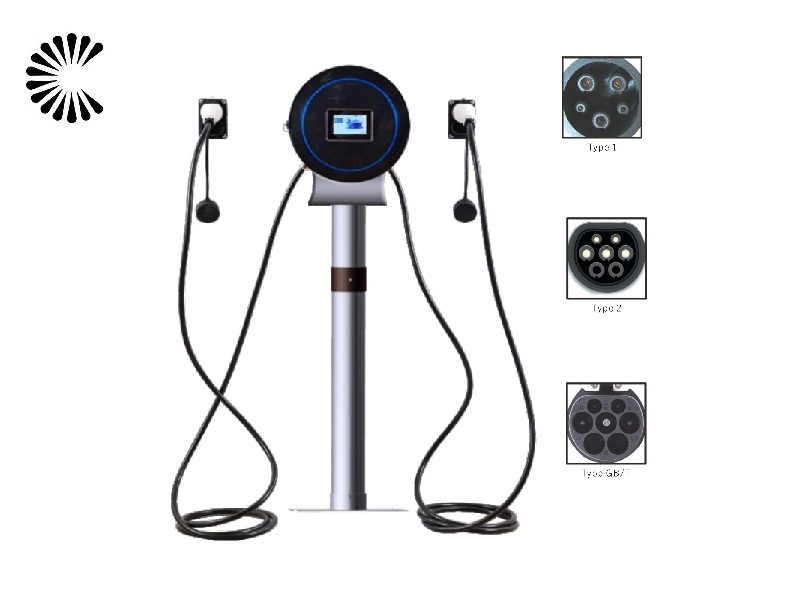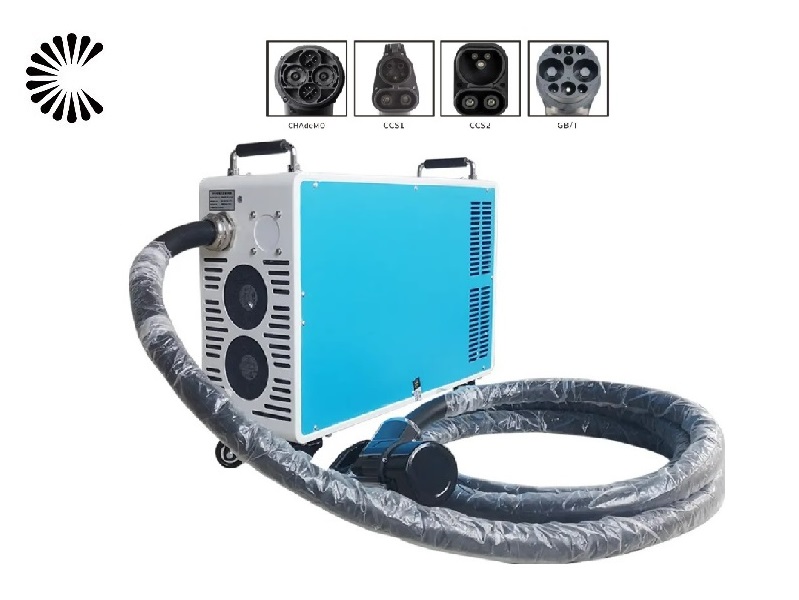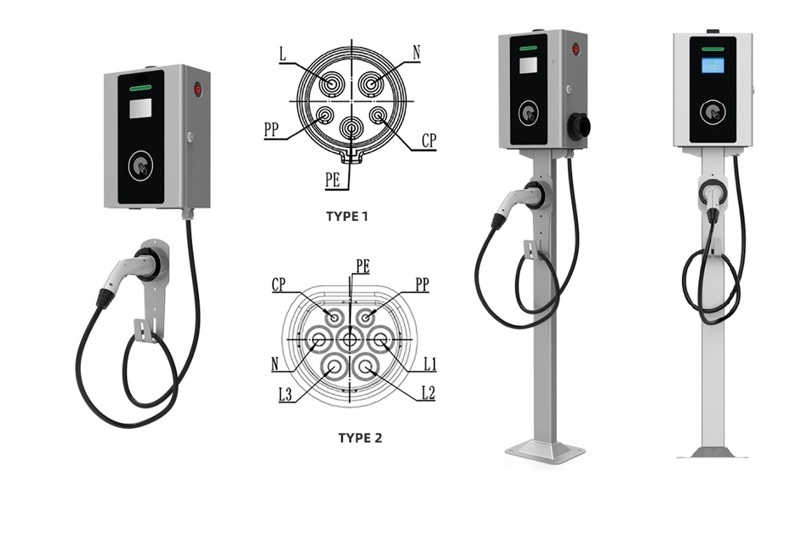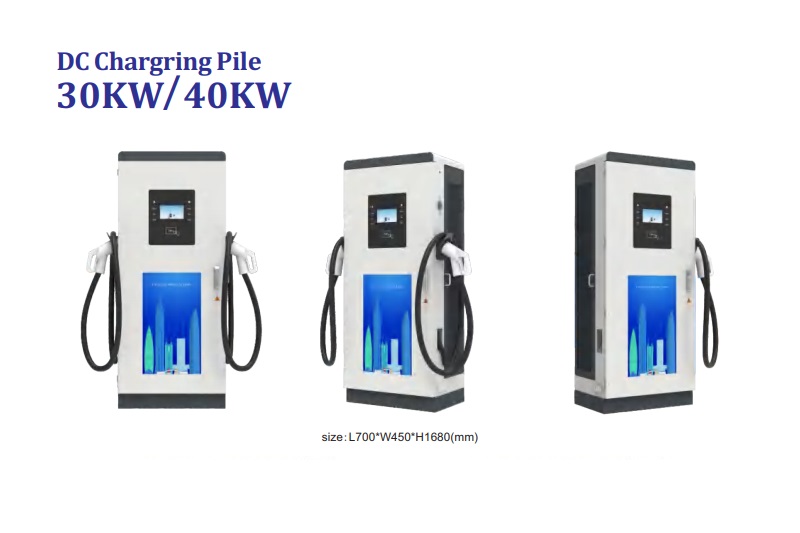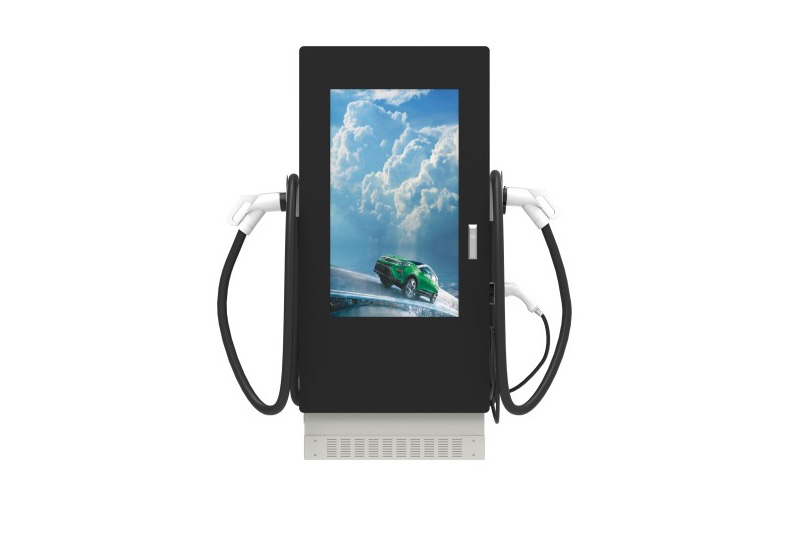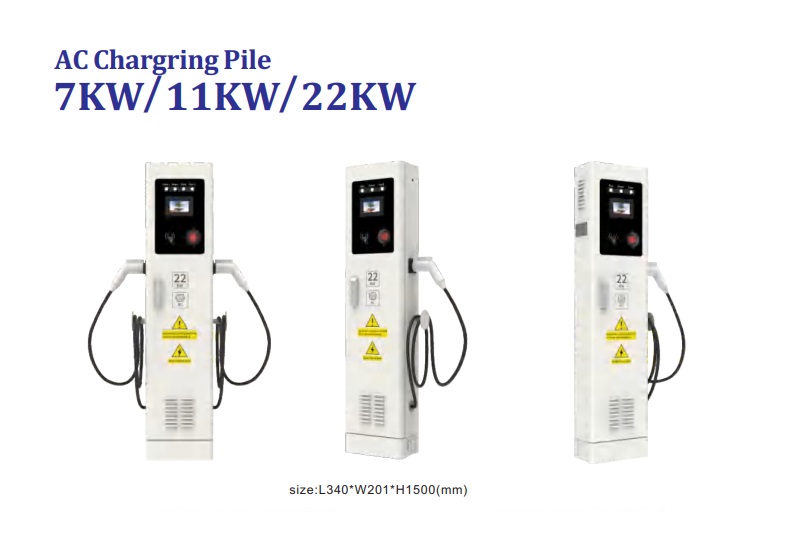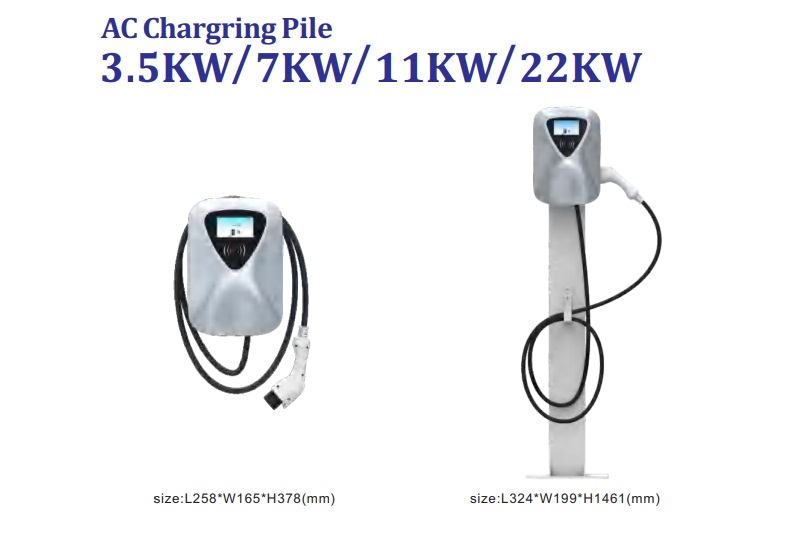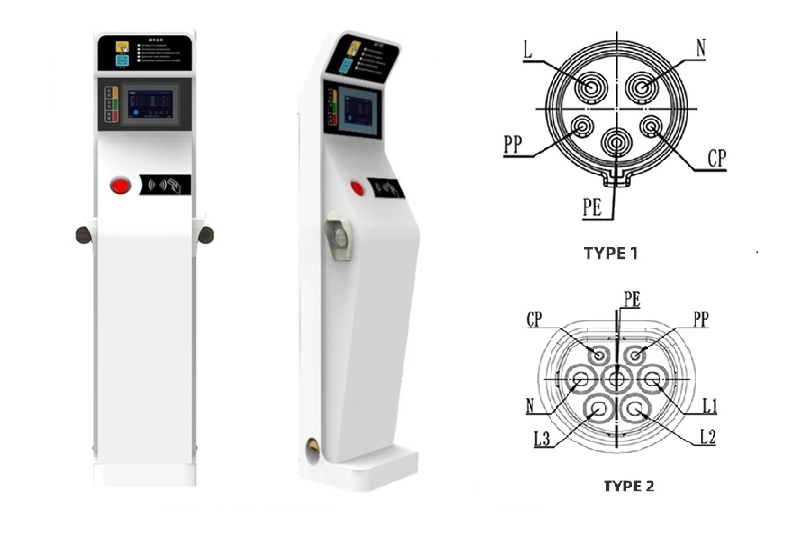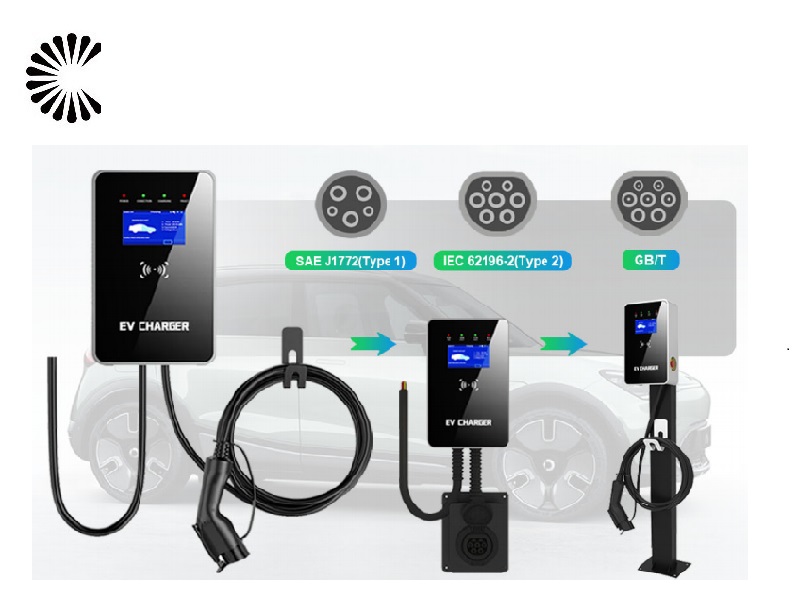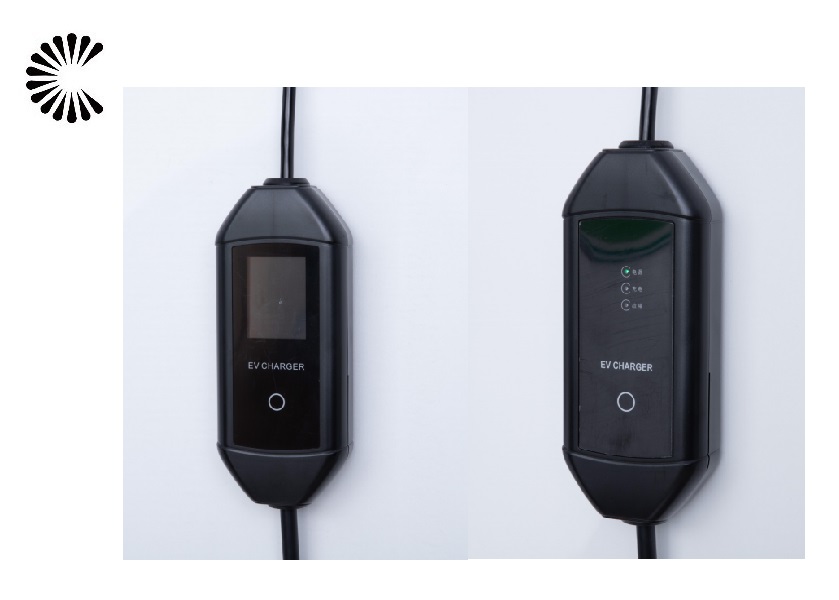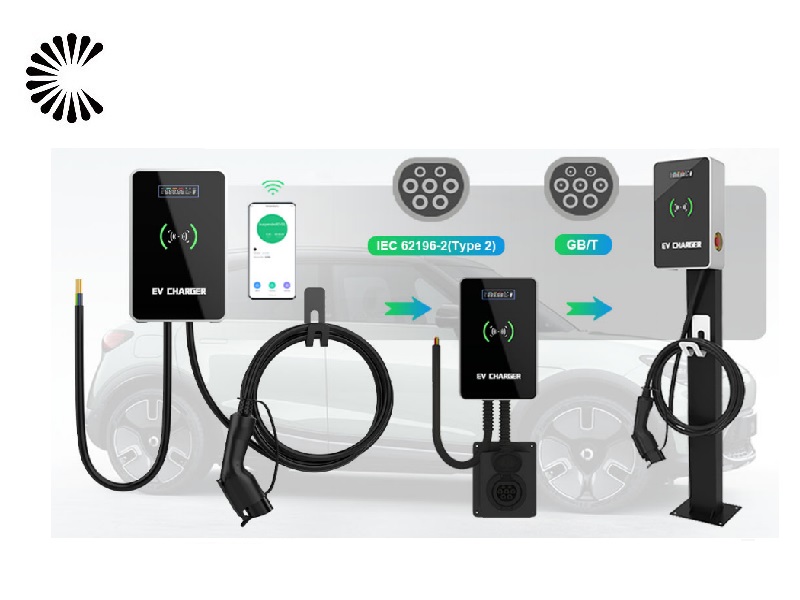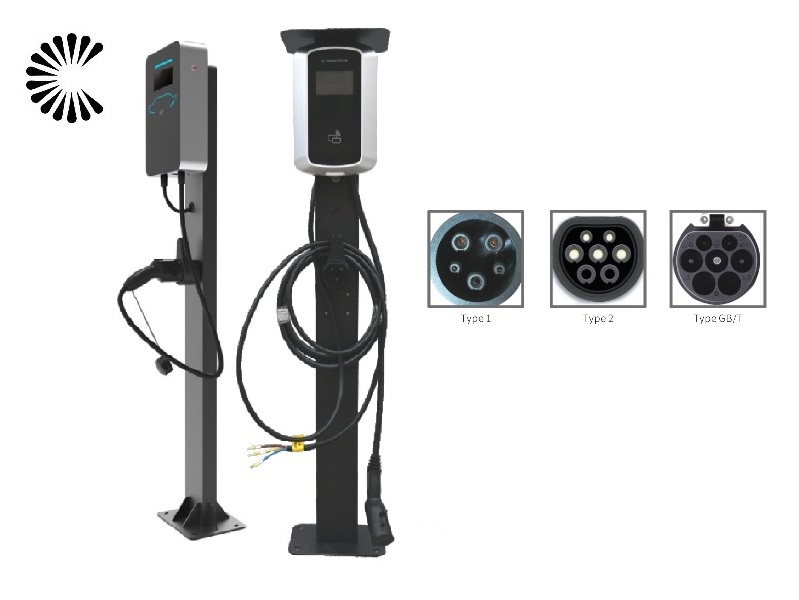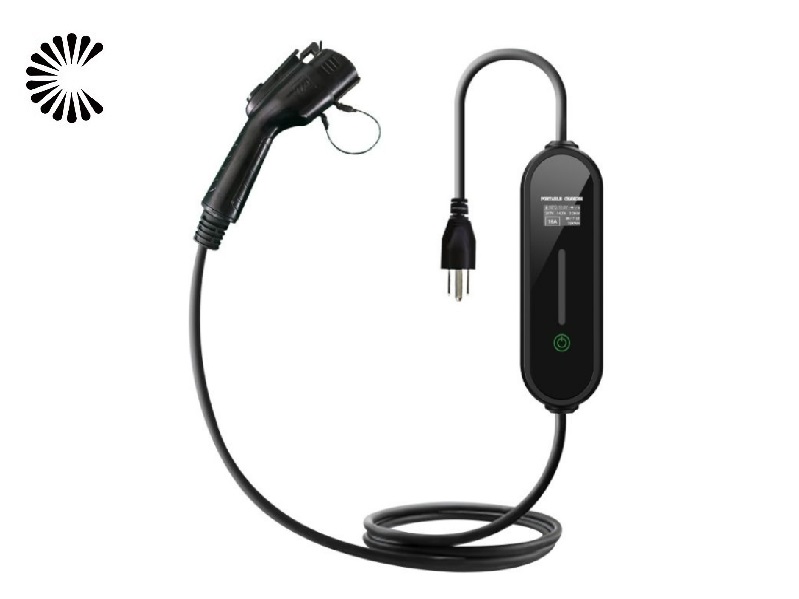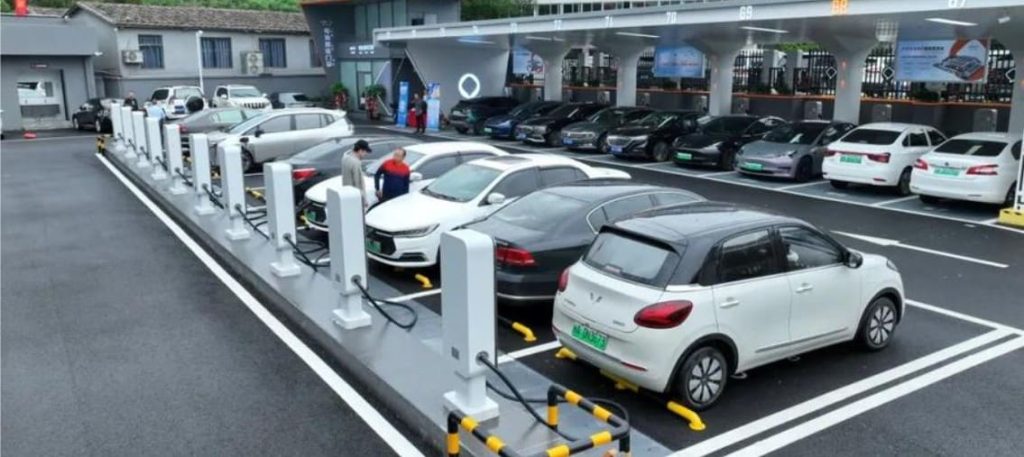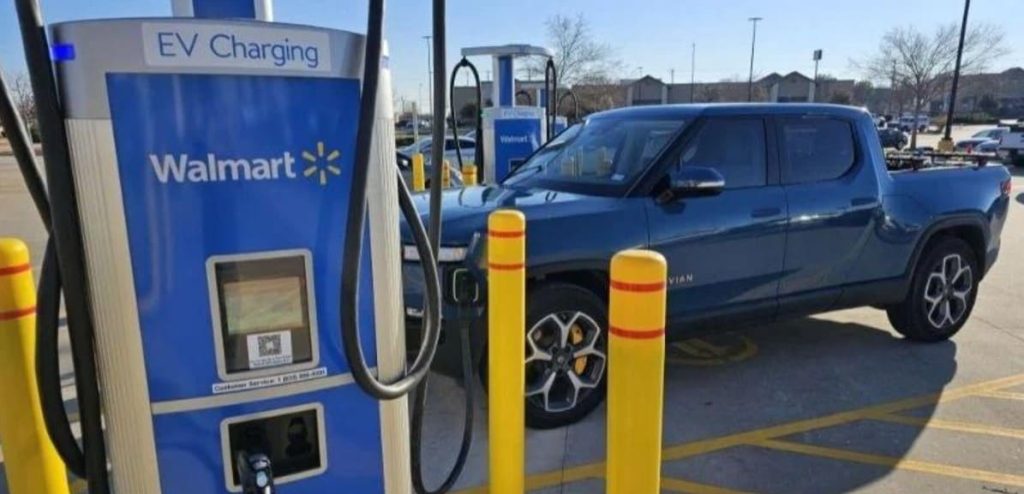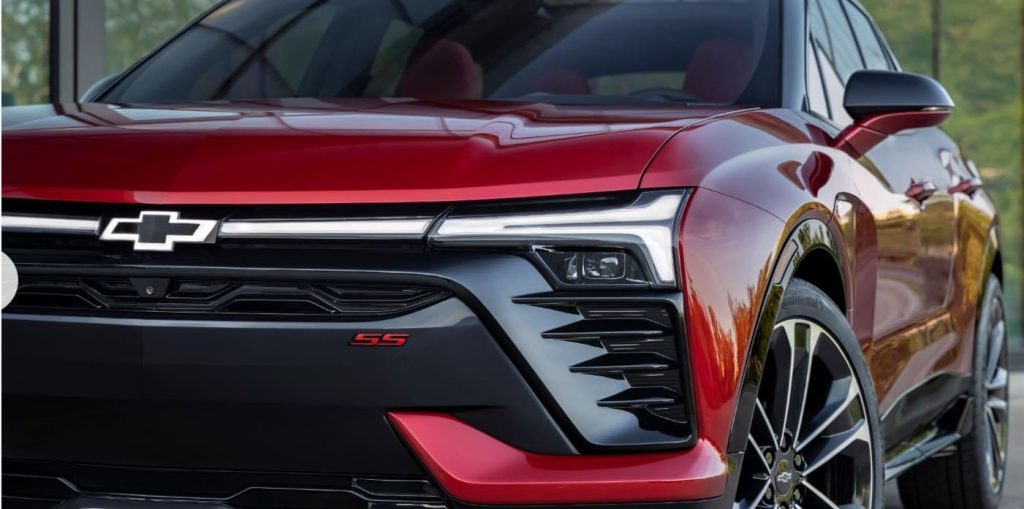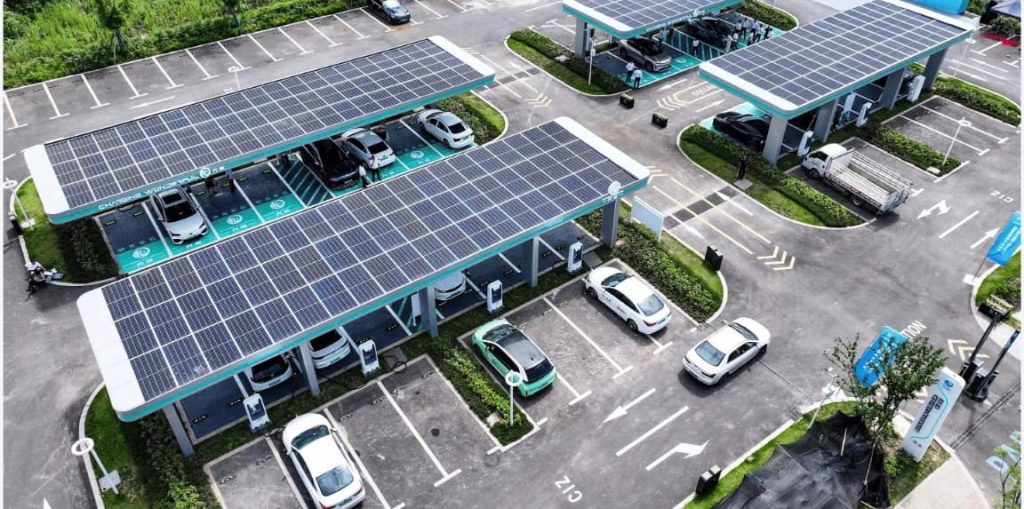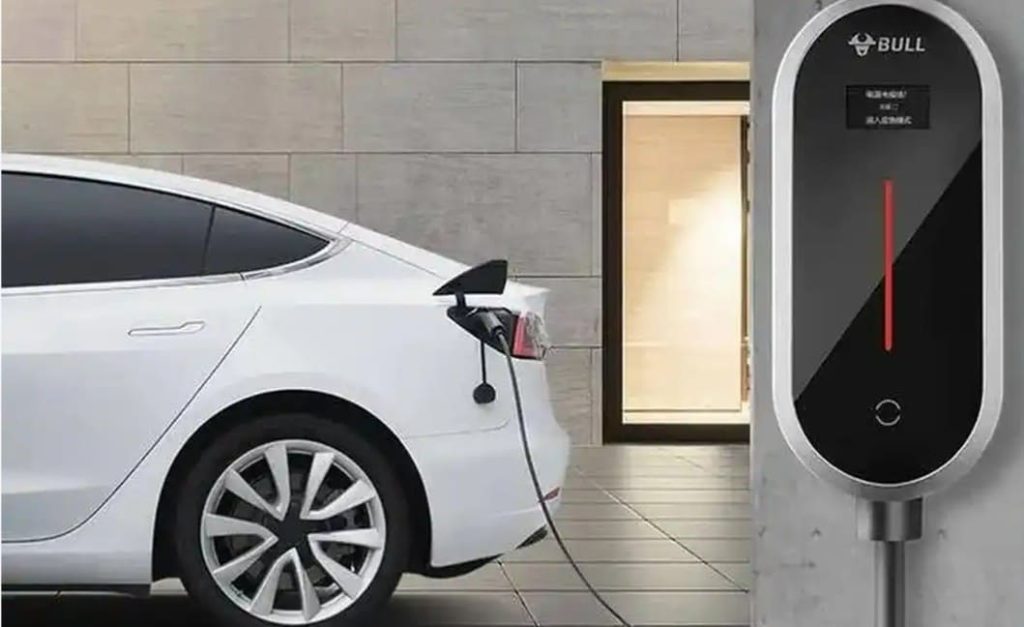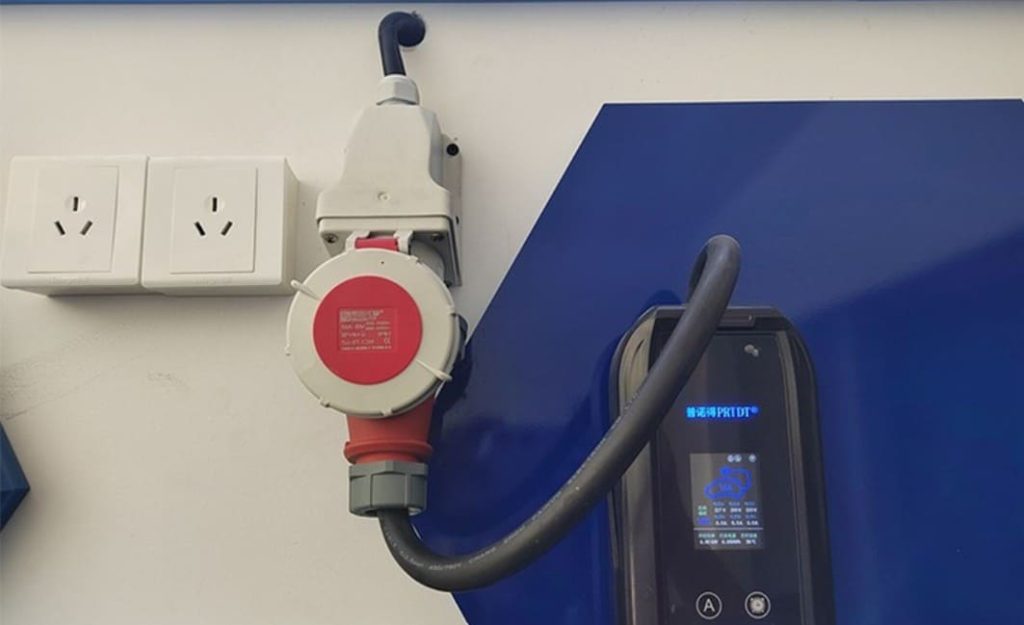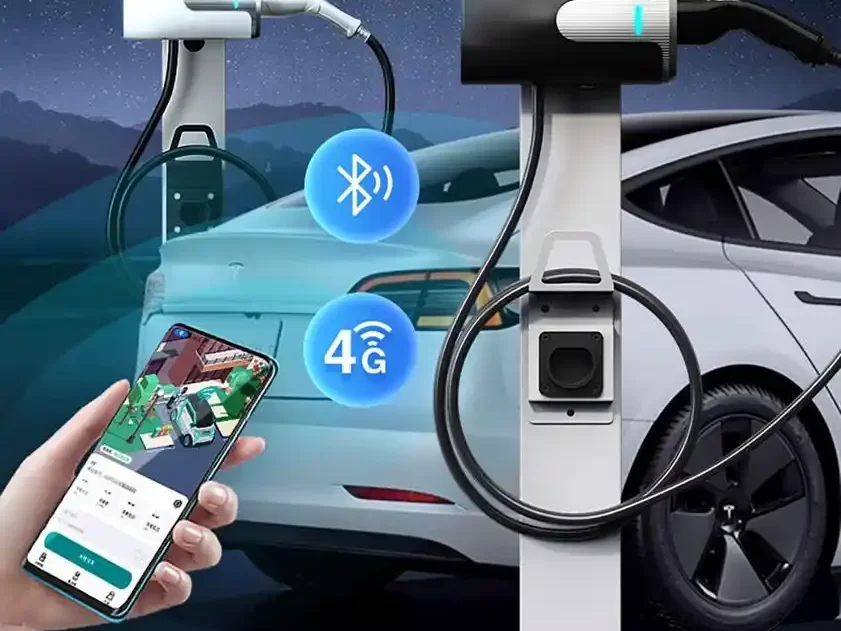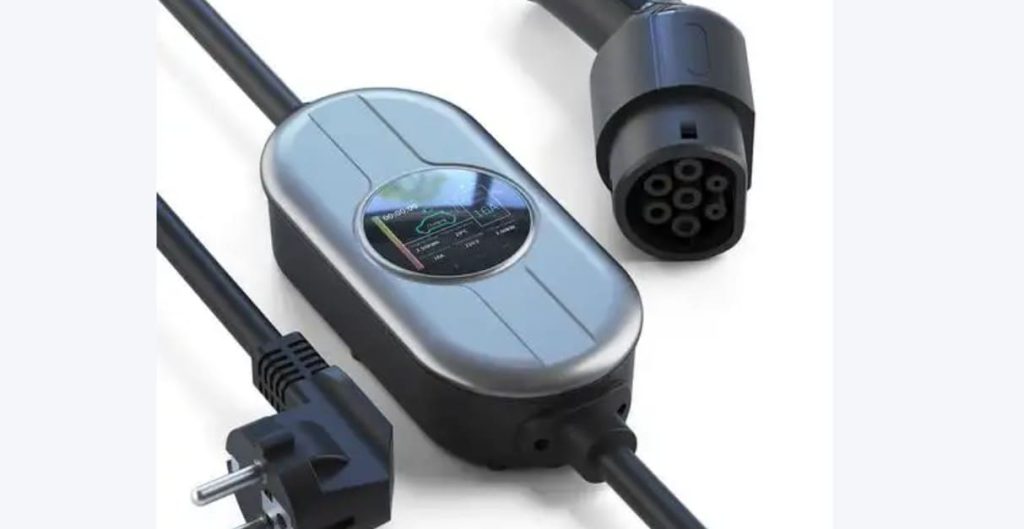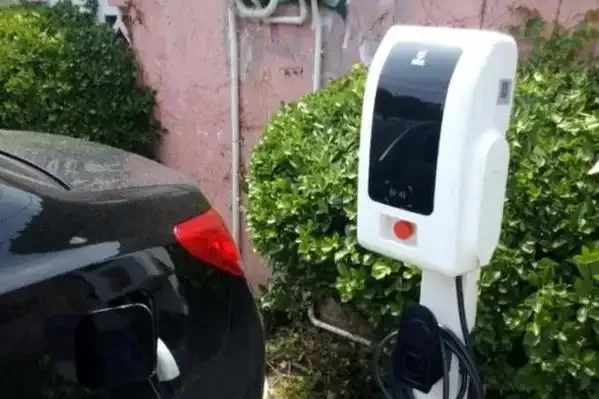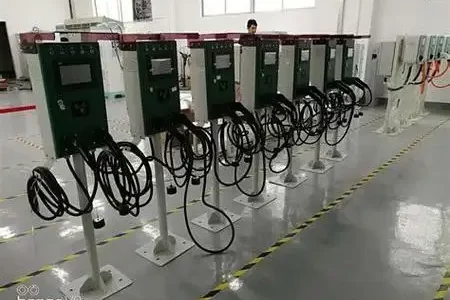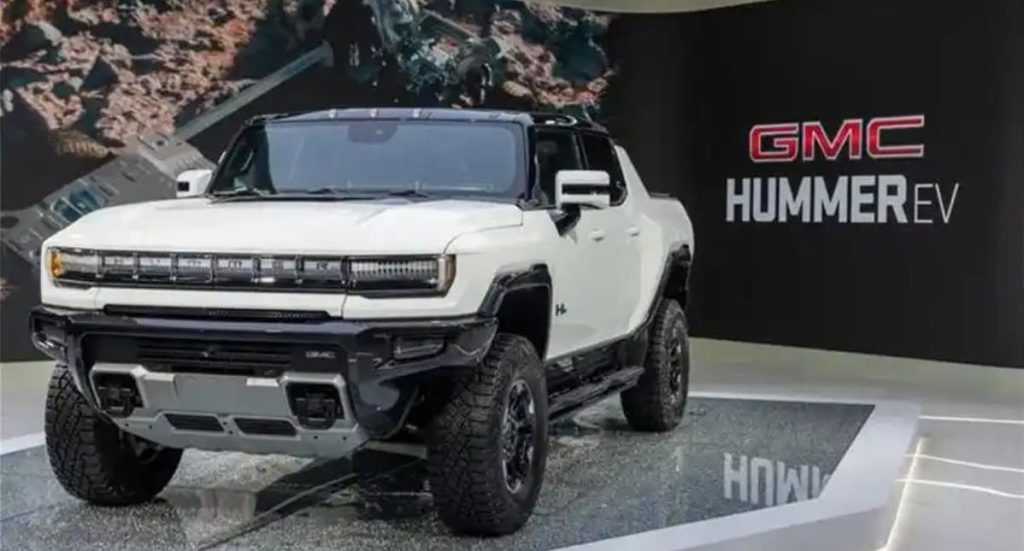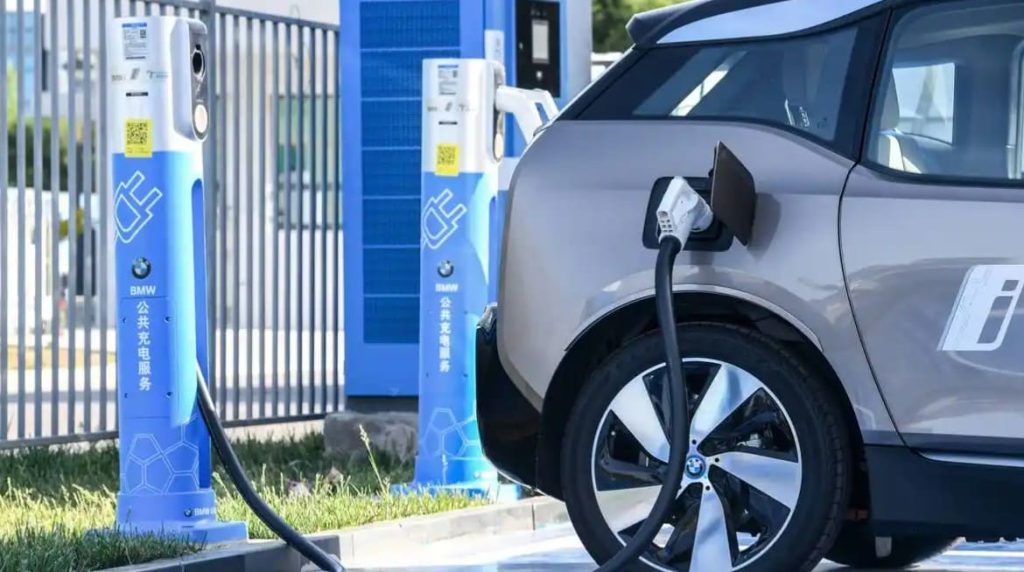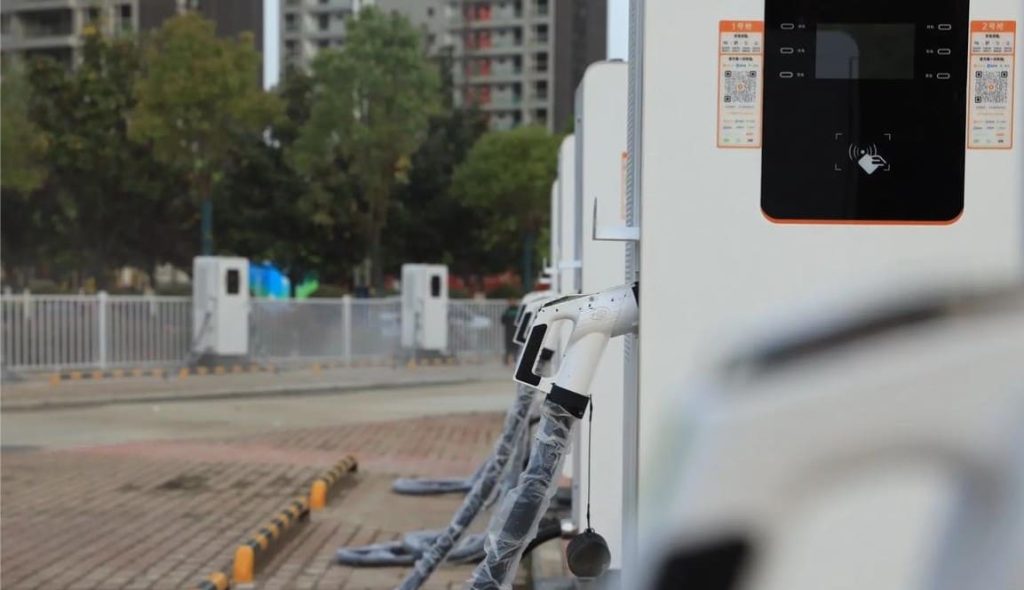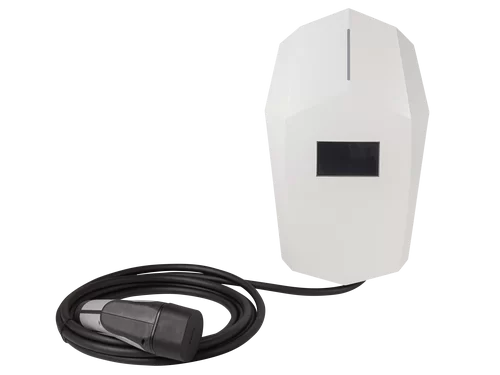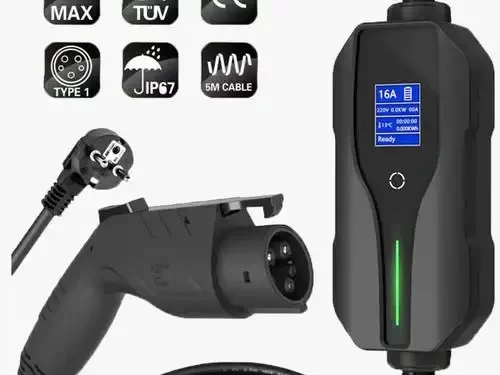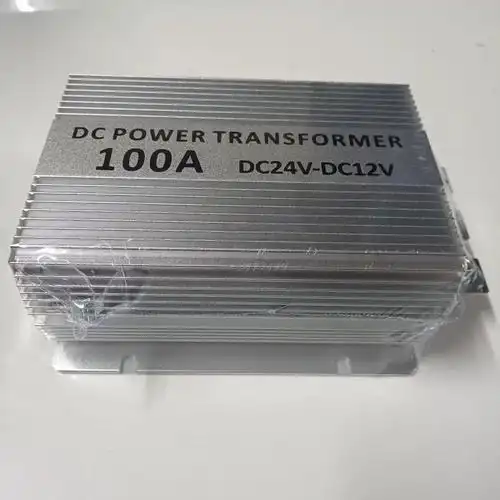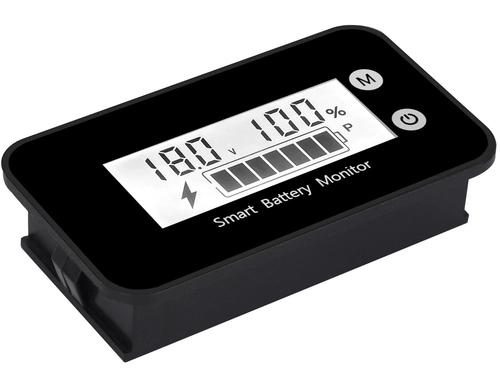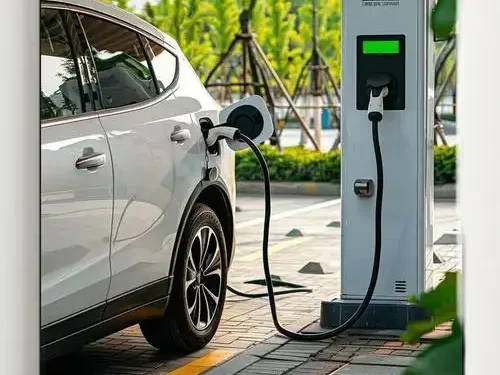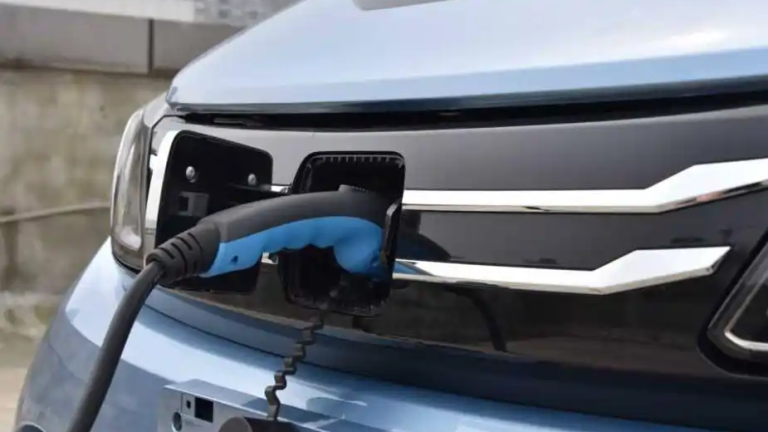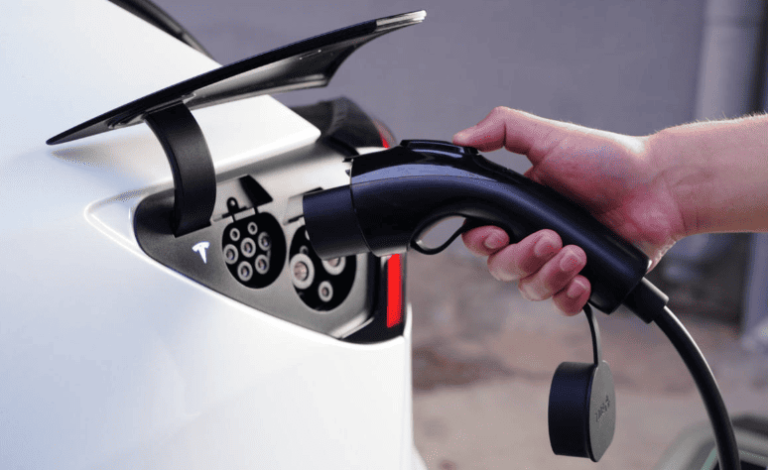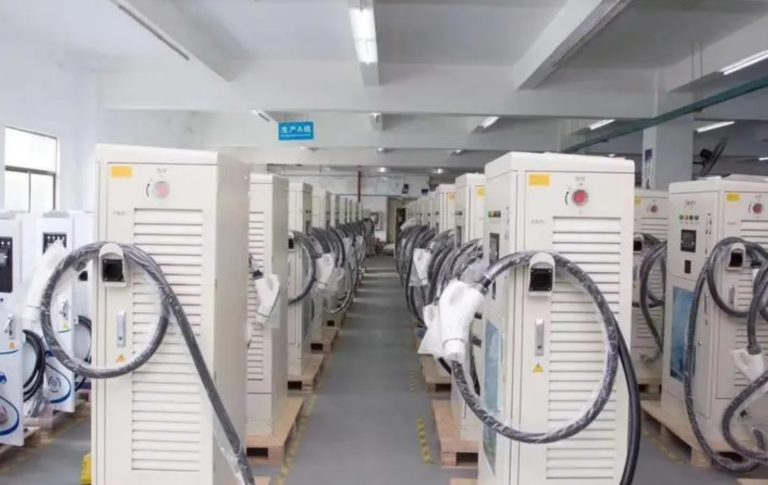EV Charger Level 3
FAQ for EV Charger Level 3
Our EV Charger Factory Introduction:
| Business Type: | Manufacturer/Factory | Main Products: | EV Charger |
| Number of Employees: | 100 | Year of Establishment: | 2014.05 |
| Production Capacity | 5000Set/Year | After-sales Service: | Technical Support; on-line teach lessons |
| R&D Capacity: | ODM, OEM | Annual Output Value: | US$5 Million – US$10 Million |
| No. of R&D Staff: | 5 | No. of Production Lines: | 6 |
ChargersGO Factory is a reputable manufacturer specializing in Electric Vehicle (EV) Chargers. Our extensive product range includes slow chargers, fast chargers, DC EV Chargers, AC EV Chargers, commercial EV Chargers, home chargers, and EV chargers of various levels, including level 1, level 2, and level 3. All our products adhere to strict China GMP design standards, ensuring top-notch quality and performance. Additionally, we take pride in securing various certifications to ensure the reliability and safety of our chargers.
Business Philosophy
“Quality is the main policy of sales” and “integrity is the principle of success” are the business philosophy of our people. We carry out one-year warranty, lifelong maintenance service, with technical consultation and other services, and long-term supply of equipment. Welcome new and old customers to negotiate cooperation!
Production Process:
The production of an Electric Vehicle (EV) charger entails a meticulous process aimed at delivering top-notch quality, safety, and performance. It involves several essential stages:
By adhering to this comprehensive production process, EV charger manufacturers ensure that their products are efficient, reliable, and safe, contributing to the broader adoption of electric vehicles and sustainable transportation.
By following a well-structured production process and adhering to strict quality standards, manufacturers can produce high-quality EV chargers that contribute to the growth of electric mobility and a greener, sustainable future.

Certifications:
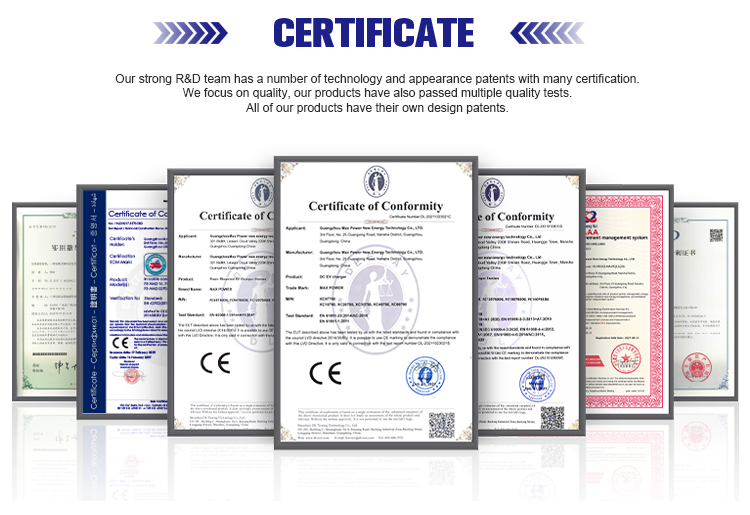
Small EV Charger Packing:
Retail and Wholesale Packaging of Small EV Chargers for Shipment
Retail Small EV Charger Shipment:
For retail orders, Small EV Chargers are shipped using express shipping methods.
Wholesale Small EV Charger Shipment:
For wholesale orders, Small EV Chargers are carefully packed in export fumigation-free wooden cases, suitable for bulk shipments or container transportation.
The primary objective of these packing measures is to safeguard the Small EV Chargers from any potential damage during sea shipment, ensuring they arrive at their destination in optimal condition. Employing correct packing procedures and utilizing high-quality materials minimizes the risk of harm during the journey.
Packing a Large EV Charger for Sea Shipment: Ensuring a Safe Voyage
Packing a large EV charger for sea shipment is a meticulous and demanding process, but with meticulous planning and precision, it can be done effectively to guarantee its safe arrival at the destination. Below are the essential steps a manufacturer may undertake when preparing a large machine for sea shipment:
Overall, packing a large EV charger for sea shipment demands precision and adherence to proper procedures. Employing high-quality materials and meticulous attention to detail ensures the machine’s safe and intact arrival at its intended destination. For added assurance, consulting a professional packing and shipping company can guarantee the machine is expertly packed and ready for its sea journey.
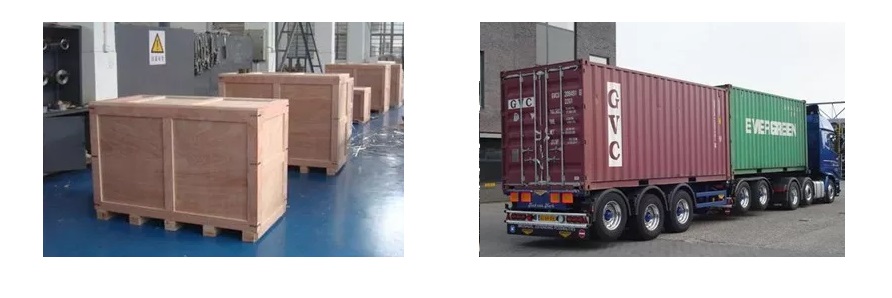

Installing an Electric Vehicle (EV) Charger requires careful planning and consideration to ensure a safe and efficient charging experience. Here is a step-by-step guide to the installation process:
It is crucial to have a licensed electrician perform the installation to ensure compliance with electrical codes and safety standards. Additionally, some EV charger manufacturers offer professional installation services, which can provide peace of mind and ensure a smooth and trouble-free installation process.

Applications of EV Charger Level 3
EV Charger Level 3 serve essential applications:
Some common applications of Level 3 EV chargers include:
In essence, Level 3 EV chargers are vital for scenarios where EVs need to be charged quickly and efficiently to meet the demands of busy individuals, travelers, commercial operators, and public transportation services.
It is appplicable for all kinds of charing protocols, Suitable for all kinds of new energy vehicles on the market,Applicable to a variety of electric vehicles, electric buses,Forklift,golf cartsightseeing cartractor, etc.
| CHAdeMO | Nissan leaf&NV200, KIA soul, CITRONEN C-Zero%Bendingo, Peu geot On, Mitsubishi l-Mev&outlander, Geely TX electric Taxi,Zero Motorcycles, Tesla Mode S(need adapter) |
| CCS | BMW i3,VW e-golf&e-up, Jaguar ipace, Tesla model 3, Hyundai ioniq&kona, Audi e-tron, OPEL ampere e, Chevrolet spark, Geely TX electric Taxi,Ford focus, Renault new Zoe |
| GB/T | BYD, BAIC,Chery, Geely, Aion S, MG, Xiao Peng, JAC, Zotype etc. |
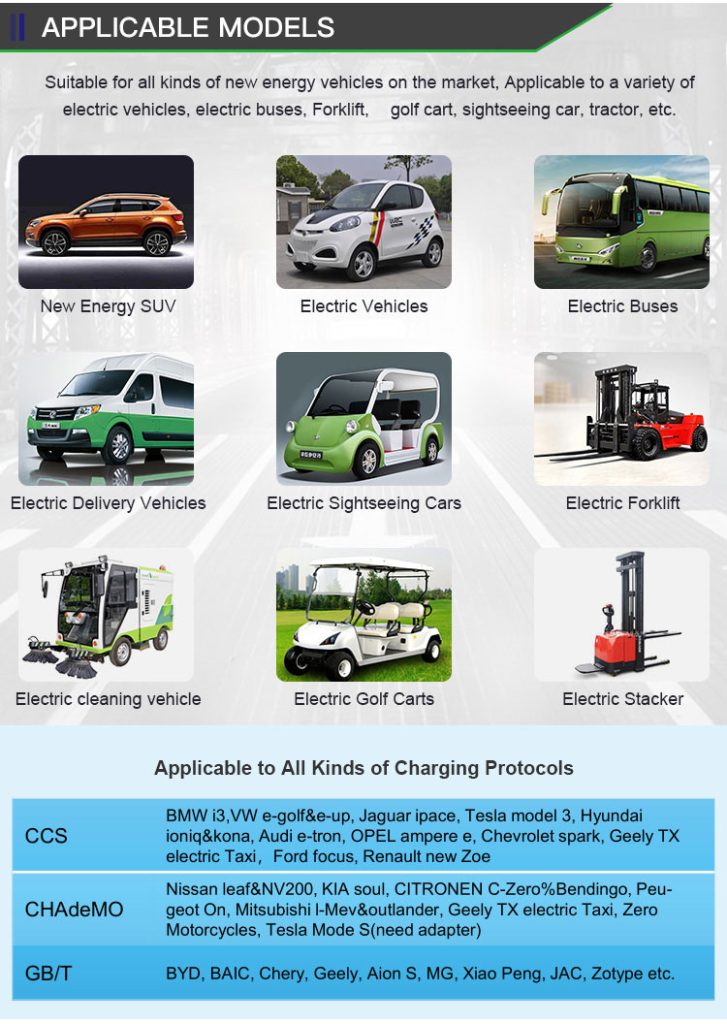

suitable for occasions such as city special charging stations that provide charging for bus, taxi,public service vehicles,sanitation vehicles,logistics vehicles, etc.; city public charging stations that provide charging for private carscommuterbus;intercity highway charging stations and other occasions that need special DC fast charging.
- Our design and manufacture proprietary technology that provides very fast charging for drivers on long highway drives. Most level 3 chargers provide 80% of the charge in 30 minutes.
level 3 ev charger
The Features of Level 3 EV Charger:
Direct Connection: Level 3 DC charging is directly connected to the battery of the electric vehicle. Thus, without AC to DC conversion, the battery charging time is reduced from the 10 or 20 hours required for level 1 charging to about 20 minutes. You can plug your car into a level 3 charger, go to a rest stop restaurant for a cup of coffee, and use a fully charged battery.
Ideal choice for commercial application fleet: Because of the Level 3 charging is very fast, it is ideal for taxi companies or companies operating large electric fleets that require fast turnaround times. Electric buses, concierge vehicles and trucks also benefit from DC fast charging. Currently, most level 3 charging stations can be found at taxi and bus stops, airports and similar places. This is despite the fact that electric car company Tesla is embarking on a campaign to build an extensive international network of level 3 charging stations.
- Software supports remote monitoring, data analysis and detailed reporting
- High quality hardware with redundancy and durability
- Advanced driver experience, including mobile app
- Provide 24/7 support for you and your driver
- Assure Maintenance and Support package
- Site design, evaluation and project management services
cost of level 3 charger:
| AC/DC | Power | CE | Guns | EXW (USD/UNIT) | Quantity | Note |
| DC | 30KW | NO | Single | US$6,400.00 | 1 | CCS2/Chademo optional |
| DC | 60KW | Yes | Two | US$19,124.00 | 1 | CCS2+CCS2/ CCS2+Chademo optional |
| DC | 120KW | Yes | Two | US$27,569.00 | 1 | CCS2+CCS2/ CCS2+Chademo optional |
| DC | 180KW | Yes | Two | US$34,325.00 | 1 | CCS2+CCS2/ CCS2+Chademo optional |
| DC+AC | 60KW | Yes | Three | US$19,538.00 | 1 | CHAdeMO(DC) & CCS(DC) & Type2(AC) |
| DC+AC | 120KW | Yes | Three | US$29,069.00 | 1 | CHAdeMO(DC) & CCS(DC) & Type2(AC) |
| DC+AC | 180KW | Yes | Three | US$36,153.00 | 1 | CHAdeMO(DC) & CCS(DC) & Type2(AC) |
3 types of DC Fast Charging; CCS 1 , CCS2, CHAdeMO:
The CCS system uses a DC charge of up to 200 kW. Although, as we mentioned above, we also plan to introduce ultra-fast charging stations of 350 kW.
CHAdeMO is an international organization dedicated to the adoption of electric vehicles.Although the organization is based in France, the CHAdeMO agreement is based on now-patented technology developed by Japan’s Tokyo Electric Power Company (TEPCO).The technology allows for high-voltage, high-current rapid charging of electric vehicles through proprietary DC connectors.
What is level 1 level 2 and level 3 ev charger?
Electric cars are so ubiquitous now that you might be want to pick one out for yourself. Before you buy the electric car, you need to know all about electric vehicle charging. Here we compare the 3 levels and let you know the difference between them.
level 1 ev charger
level 2 ev charger
Suitable for Car Brands:
Almost all the electric car, minibus, bus, van vehicles are suitable. Please contact with our sales team to confirm the right models.













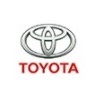




Application
They are suitable for occasions such as city special charging stations that provide charging for bus, taxi, public service vehicles, sanitation vehicles,logistics vehicles, etc.; city public charging stations that provide charging for private cars, commuter, bus; intercity highway charging stations and other occasions that need special DC fast charging. EV Bus station, Highway gas, sevice station, Parking garage, commercial operators, EV infrastructure operations and service providers, EV dealer workshops.

Here we list down some of application scenarios:
- Business organizations: Supermarket, Shopping mall, Hotel, Restaurant, Pharmacy
- Non-profit organizations: Airport, Railway / bus station, Exhibition, Museum, Hospital, School, Convention center, Lottery station, Government affairs center
- Financial organizations: Bank, Insurance company, Foundation, Security company
- Entertainments: Movie theater, Club, Bar, Salon, Gambling house
Suitable for Car Brands:
Almost all the electric car, minibus, bus, van vehicles are suitable. Please contact with our sales team to confirm the right models.


















Transportation
In the course of transportation, the charger should be packed firmly and intact ina solid wooden packing box, and the direction of loading and unloading should be marked. The charger should not be stored and transported upside down. In the course of transportation, corresponding tightening measures should be taken to avoid strong vibration and bump damage to the outer packaging of equipment. After arrival of the goods, user should check whether there is any damage. If there is any transport damage, user should consult with the transport party or our ompany to solve it. Check whether the contents in the box are in conformity with the packing list immediately after opening the box. The packaged equipment should be stored in the room where the relative humidity is less than 80% and the ambient air temperature is -20℃ to +55℃. Storage places should be dry, clean and airy, and can prevent the invasion of harmful gases. It is strictly forbidden to store corrosive articles in the same place. Note: It is strictly forbidden for non-professionals to disassemble equipment components.

Certification

Our Factory have certifications such as CE ISO Certifications. TUV /UL /CE Certificated for Overseas on cable and wire.
Why choose us
- Decades of Experiences: As a Chinese academy of sciences park high-tech enterprise and manufactory, our factory establised since 2002, with over 10 years factory development, our factory became famous brand in China. We believe new energy is the future, better to environment and more economical to our life. We are an integrated hi -tech electronic company. “Passion, Honesty, Sound service, Keen cooperation and Development” are our goals. We are here expecting friends all over the world!
- Various Charging Products: Full range of charging products as well as charger accessories. Provide full support to customer after-sale services. Most of the model of produts are able to be customized.
- For all the products that we shipped have 1 year warranty period as well as life time spare parts and accessories with competitive price .
- Accept customized OEM ODM products.
- Experienced foreign trade team to handle the shipment and after-sale services.
- Efficient and fast supply chain.
Showcase

Maintenance
- Charger body is easy to be fixed with anchor bolts to prevent it from inclining
and dithering due to external and human factors. - Shading and rainproof measures should be taken for chargers. It is suggested
to install shelters outdoors. - Check regularly whether all bolts in chargers are tightened, whether the connecting wires are loosened or not, or the connection is not firm, etc.
- Check for short circuit.
- Check whether the emergency stop button is available.
- Attention should be paid to lightning protection to ensure effective shielding
and reliable grounding of chargers. - When in use, the output voltage and current of the charger should be controlled within the nominal range to ensure that the charger works in the state of maximum efficiency.
- When the charger stops using, the charging output should be stopped first, then the cable should be wrapped and put back in place.
Note: During the transportation, the chargers should be packed firmly and the
direction of loading and unloading should be marked. It is forbidden to store and
transport chargers upside down. Corresponding tightening measures should be taken
to avoid strong vibration and turbulence damage to the outer packaging of equipment.
Factory Introduction
By virtue of high-quality products and services, our factory is one of China famous commercial ev charging station manufacturers. It has won many awards such as “Gazelle Enterprise”,” Excellent Software Demonstration Enterprise”, “Intelligent Manufacturing Pilot Demonstration Enterprise”, “Little Giant Enterprise in Science and Technology”. etc. It has also wined awards as “2017 Best Charging Solution Supplier”, “2018 Top 10 Charging Pile Brands in China Green Logistics Industry”,2019 Top 10 Charging Pile Brand Award, “2020 Top 10 Influential Brands in China Charging Facility Industry” and many other industry awards. Meanwhile, our commercial ev charging station factory has successfully passed the assessments as “safety production tandardization of the three-level enterprise”, “international ISO full series management system certification” and other authoritative certification.
| Certificate: | CE RoHS FCC Certificate | Warranty: | 12 Months |
| Input Voltage: | 110V-380V | Output Voltage: | 0-750V |
| Working Temperature: | -25℃-55℃ | Application: | Home Use/Commercial Use |
| OEM Service: | Color,Logo,Package, cable length, cable color | Supply Ability : | 4000 Piece/Pieces per Week |
| Packaging & Delivery: | Shanghai Port | Capacity | 4000 Piece/Pieces per Week |
| Lead Time: | Quantity(units) 1 – 5 5 working days | Factory Type | Supplier |
| Country / Region | China/Gungdong | Main Products | EV Charging Station, EV Charging Cable, EV Charging Connector |
| Factory employees | Over 100 people | Total Annual Revenue | Above US$100 Million |
| Main Markets | Europe South America | Connection: | type 1 or 2 plug |
| Mass production price | Negotiable | Charger Capacity | 3.5kw~480kw |
| Current | DC/AC | Plug type | Type 1,2,CHAdemo/CCS-2/CCS-1 |

Parameters
General Requirements
General Requirements: DC Type, Ground-Mounted
| Charger Capacity | 160KW | 180KW | 240KW |
| Product Model NO. | ENC-DCL160B ANSI-DCL160B JIS-DCL160B | ENC-DCL180B ANSI-DCL180B JIS-DCL180B | ENC-DCL240B ANSI-DCL240B JIS-DCL240B |
Input Requirements
| AC Supply System | Three-Phase, 5 Wire AC system |
| Nominal Input Voltage | AC380V±15% |
| Input Frequency | 45-65Hz |
Environmental Requirements
| Ambient Temperature Range | -25 to 55°C |
| Ambient Humidity | 5 to 95% |
| Storage Temperature | -40 to 70°C |
Mechanical Requirements
| IP Ratings | IP 54 |
| Cooling | Air-cooled |
Output Requirements
| Number of Outputs | 2 |
| Type of Each Output | DC200-750V DC150-500V(JIS) |
| Single Output Max. Current | 200 Amp |
| Power Factor | ≥0.99(50% load above) |
User Interface & Display Requirements
| Display & Touch-Screen Size | 7 Inches Touch Screen with Shell |
| User Authentication | Mobile Application or User Interface / QR Code/RFID Card /Password Login |
| Metering Information | Consumption Units |
Communication Requirements
| Communication between EVSE and Central server | OCPP 1.6J Protocol (Optional) |
| Interface between Charger and CMS | Ethernet/3G/4G/WIFI (Optional) |
Protection & Safety Requirements
| Executive Standard | IEC 62196 2017, IEC 61851 2017, SAE J1772,CHAdeMO etc. |
| Safety Parameters | Over Current, Under Voltage, Residual Current, Surge Protection, Leakage Protection, Short Circuit, Over Temperature, etc. |
Features
- Simple operation, convenient installation;
- High efficiency, reliable and stable performance;
- Friendly interaction interface,7inch color touch screen;
- Support multiple modes of chargingoperation management and payment;
- Support 3G/4G,,Ethernet orwireless telecommunication;
- Support RFID Card/0CPP 1.6J(optional);
- SupportCCS-2/CCS-1/CHAdeMO connector(or Socket)optional; Overload integrated Protection;
- Support online data upgrade.
Suitable For Travel Plazas (Express Corridors); Fleet (Buses, Last Mile Trucks, Vans); Retail (Supermarkets, Malls); Convenience Stores (C-Stores); Public Areas (Parks, Beaches, Attractions, Etc)
ac or dc ev charger – difference between ac and dc
ac ev charger
The Alternating Current is Alternating Current; DC is Direct Current. “Alternating current” is the most popular transmission mode in the general power grid nowadays. Because of its characteristics and low consumption. “Dc” is the current in the battery. It is not suitable for remote transmission, but the current state must be DC at the critical moment of charging. The power is transmitted to the home or public charging station by AC alternating current. And then it converted into DC direct current by the small “AC-DC converter (rectifier)” which attached to the car into the battery. Therefore, we often say that AC slow charge and DC fast charge in charging are actually just a state of current.


ac charging pile station
dc charger
- AC EV charger is slower than DC EV Charger.
- Assplication scope: AC EV Charger can be used home and public, DC EV Charger used most in public.
- AC EV Charger is smaller and cheaper than DC EV charger.
- AC EV Charger power between 2KW to 43KW while DC EV Charger between 50KW to 150KW.
FAQ (Click to see more FAQ)
why is dc charging faster than ac ev charger?
On batteries, there are usually two ports: a slow charge port and a fast charge port (both actually connected to DC finally to battery). The fast charging port is directly connected to the charging port of the battery through the wire harness (fast charging port); While The slow charging port passes through an on-board charger (OBC) and is then connected to a charging port (slow charging port) in the car body. Therefore, in fact, the fast charging pile is a charger, which directly outputs the charging power to the battery. Since the charger is outside the vehicle, there can be space for it to install cold cutting, power and other equipment. It can naturally be high-power. The slow charge charger is actually in the car, and the slow charge pile only outputs a 220V power to the charger. The power of the charger in the car is how much, and the power of the slow charge cannot exceed it. The vehicle charger converts the 220V into direct current to charge the battery. The car’s interior space is small, the charger is small, and the cooling system is difficult, so liquid cooling is unlikely.
Can I buy a level 3 ev charger for home?
The Level 3 EVSE is designed for fast charging in commercial locations.The level 3 system requires 440 volts DC power and is not suitable for home use.
how much does it cost to use level 3 charger?
In order to facilitate management and reduce the occurrence of fire accidents, some communities encourage owners to park their bicycles to the parking place for charging, and set the electricity price to about 0.5 yuan per degree. The electricity price of charging piles installed in commercial places is about 0.8 yuan per degree, which is flexibly fixed according to operators. As an investment product, electric vehicles need to be purchased and installed at a cost. The specific charging standard needs to be determined by investors according to the local electricity price and the use of the vehicle. For example, the battery capacity of a certain brand of car is 82kwh, that is to say, the battery is fully drained and then filled up to 98 degrees (82 degrees ×1.2(general charging loss rate)=98.4). According to the general household first step electricity price of 0.4883 yuan/degree, it needs 48 RMB.
can all electric cars use level 3 chargers?
All three charging station types are available.If you have a PHEV with a small battery pack, you may only need Type 1 charging.For all-electric vehicles, types 2 and 3 will be the ones you use most often, if not all the time.
are there level 4 chargers?
No, there are only level 1, level 2 and level 3 ev chargers.
How we test the EV charger?
With the increasing number of new energy vehicles, the charging pile industry is also emerging, and charging pile detection is also one of the key projects for safety consideration.
What are the main test items of charging pile inspection?Noah detection experts explain: Charging pile detection is mainly divided into two directions, one is the electrical parameters of the test items, the other is the compatibility of the test items.
I. Charging pile compatibility test items
When charging, to ensure that the connection between the charging plug and the interface is safe and properly charged, it is necessary to conduct a compatibility test.Noah Test Chen Gong said: the compatibility test includes charging interface compatibility test, charging control compatibility test and charging communication compatibility test.
Second, the charging pile electrical parameters test items
To achieve stable charging, it is necessary to ensure that the output voltage, current and accuracy meet the requirements and reach the rated standard of charging the car.For example, charging pile output test is mainly aimed at the output voltage, current and accuracy of the standard unity.There are safety requirements test, mainly including output overvoltage and input undervoltage, emergency stop and other items for unified regulations.
3. Other test items
In addition to the above two charging pile detection methods, there are other charging pile detection methods, such as mechanical strength test, noise test, environmental test and other safety test detection.
In the charging pile test project, Noah test can solve the practical difficulties for enterprises, not only can improve the charging pile and its performance from the technical level, but also can provide a perfect service system.
Level 3 EV Charger Installation
The installation process of charging pile is roughly divided into three steps: property consent — installation of electricity meter — installation of charging pile
Property — Consent to property
(In addition to the above materials, other materials required by the power supply company shall also be provided, which shall be handled by the business office.)
Fill in the Registration Certificate to obtain the property consent and seal
State Grid – Installation of new energy meters
(Submit materials, on-site survey, installation of electricity meters)
Install new energy meters
The following information is required to apply for an electricity meter:
1. Application form for electricity use
2. Valid identification of customer
3. Certificate of property right of fixed parking space or license certificate of property right unit
4. The property management shall issue the certificate materials agreeing to use the charging and changing facilities and external access construction
5. Technical parameters and materials of charging pile
Installation service providers on-site installation of charging pile
Charging pile installation service provider — install charging pile and provide relevant installation qualification and product qualification
So now the owners of the pile home installation service process is not very clear, today Xiaobian will give you a detailed chat pile home installation service process:
1. Customer orders
2. The customer shall contact the owner within two working days after placing the order
Check the information. Postpone the weekend
3. Generally, charging pile installation will be completed within a week
The customer can trace the installation progress after placing the order:
Follow Zhuangjia wechat public account — charging service (installation progress query) — Input your mobile phone number and verification code to view your installation progress
If you do not find a professional installation service provider to install and choose to install by yourself, note the following:
Before installation: Check the power points
※ When selecting power points, the independent meter is preferred.For some property power supplies and transformer power supplies, due to the power points, abnormal current and voltage fluctuations may be too large, beyond the allowed charging range of the vehicle, and the charging will be terminated by the vehicle BMS.
If the power point does not meet the preceding standards during no-load measurement, do not install the power point.If you insist on installation, you shall bear the responsibility for any loss.Even if the power source passes the no-load test, it may fail to be charged due to power points after installation.After the installation is complete, observe the installation for seven days.
To ensure normal charging, the power point must be reliably grounded.
Select the installation location:
Specifications for installation materials:
Meter → leakage protection, please use YJV cable
220V charging pile: no less than 3*6mm (within 80 meters)
Or not less than 3*10mm (within 160m)
380V charging pile: no less than 5*6mm (within 80 meters)
Or not less than 5*10mm (within 160 m)
Leakage protection → charging pile, please use YJVR or RVV cable
220V charging pile: not less than 3*6mm
380V charging pile: not less than 5*6mm
※ The cable shall not be exposed during the whole installation. It needs to be protected by a hard pipe
The inner diameter of the protective pipe shall not be less than 1.5 times the outer diameter of the cable (including the protective layer).
How to charge for charging pile installation?
The charging pile installation cost is mainly divided into the construction cost of the installation personnel and the cable material cost
The installation price of charging pile is determined according to the specific situation, and the installation environment is simple and the cable is less.
If the installation environment is complex, the cable length will cost more.
Therefore, it is recommended that owners inspect their parking Spaces in advance and reduce installation costs by designing short routes. Generally, there will be multiple distribution rooms in the community. Owners can choose a relatively close parking space to save a lot of costs during installation.
Your Market Strategy:
Recommend AC dC charging at home
AC DC Chargers are Ideal for owners, businesses, and municipalities interested in EV charging solutions for employees, customers, and residents. It provides a complete set of features that station owners need to manage all aspects of the EV driving experience. These models are ideal for multi-family home fleet charging station charging and personal charging.With speed, durability and flexible configuration options, charging stations are sure to meet your fleet or multi-family charging needs.
Recommend type 2 ac charger for ev
EV Charger Level 3 Wholesale Manufacturer In China
Level 3 EV chargers, also known as DC fast chargers, are primarily used for quick and efficient charging of electric vehicles (EVs). These chargers are designed to provide a high-powered and rapid charge, making them ideal for various applications where fast charging is essential. ChargersGO is the manufacturer and wholesaler for EV Charger Level 3. Please feel free to contact with us.


